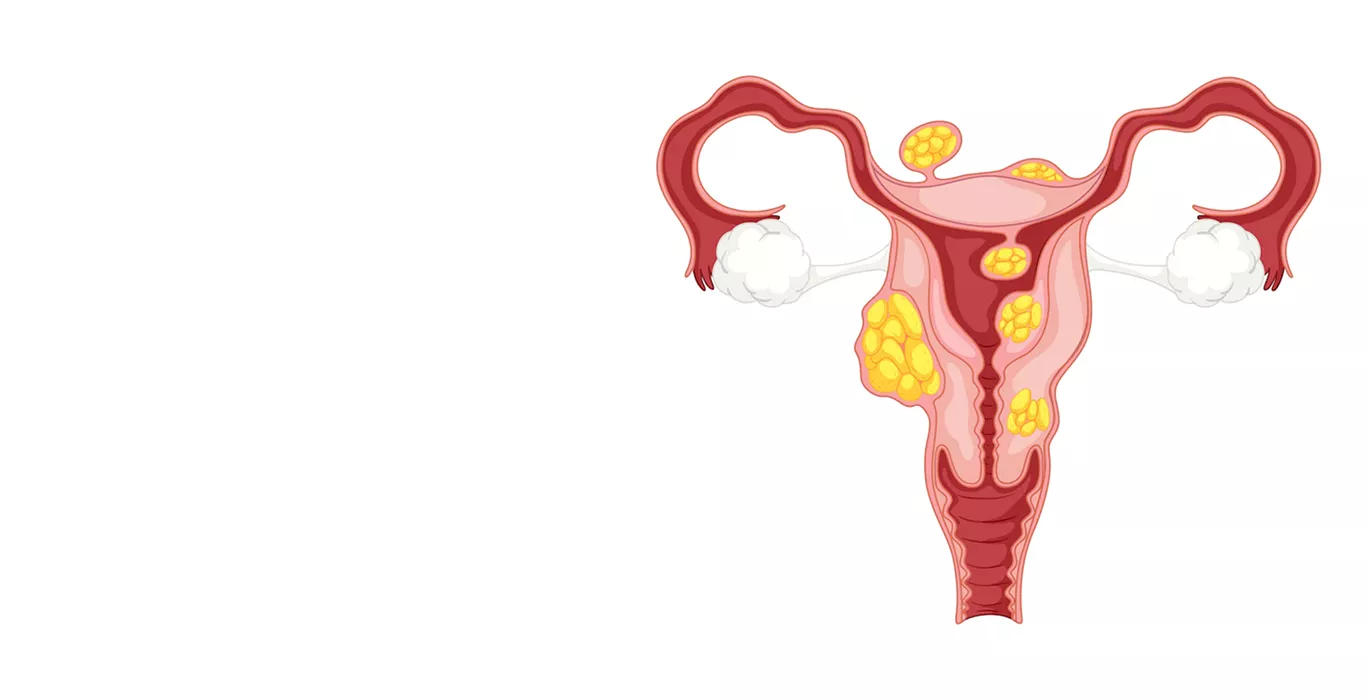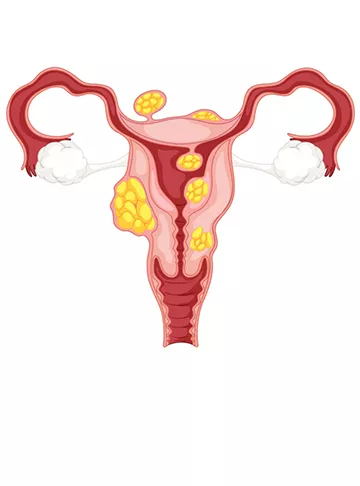How are uterine fibroids diagnosed?
For fibroids to be diagnosed properly, you will need to consult a gynaecologist. After going through the pelvic exam, the doctor will be able to analyze the condition, size and shape of the uterus. You may have to go through other tests for a precise and detailed diagnosis which include-
- Ultrasound Scan
An ultrasound scan uses high-frequency waves which produces images of woman’s uterus on a screen. This will help your specialist to analyze its internal structures and presence of fibroids. In this case, a transvaginal ultrasound scan may provide clearer pictures for a better diagnosis as here; an ultrasound probe is inserted in the vagina as it is closer to the uterus during the procedure.
- Pelvic MRI
Pelvic MRI is an in-depth imaging test procedure that produces clear pictures of a woman’s uterus, ovaries and other pelvic organs.
In such conditions, changes in diet and lifestyle may help as well. Avoiding meat and high-calorie foods and opting for food high in flavonoids, green leafy vegetables, green tea and fish like tuna or salmon can be very helpful.
Managing stress levels and losing weight in case of obesity can also benefit women suffering from fibroids.
What are the treatment schedules for uterine fibroids?
Once you visit your doctor regarding your problems related to fibroids, he/she will develop a treatment plan according to your age, the size of your uterine fibroids and your overall health. You may need to go through a combination of treatments. The uterine fibroids treatments include-
Medications
To treat uterine fibroids, medications are prescribed to regulate your hormone levels so as to make the fibroids shrink.
Gonadotrophin-releasing hormone (GnRH) agonists including leuprolide (Lepron) helps in dropping the levels of estrogen and progesterone hormones. Prominent drops in the levels of these hormones will eventually stop menses and fibroids will shrink.
GnRH antagonists, including cetrorelix acetate and ganilrelix acetate, also help in shrinking fibroids. They help in inhibiting your body from producing FSH (Follicle-stimulating hormone) and LH (Luteinizing hormone).
There are other options too that helps in controlling menstrual bleeding and pain, but they won’t eliminate or shrink fibroids. These include,
- Birth Control Pills
- An intrauterine device (IUD) which releases the progestin hormone e.g. Mirena.
- Over the counter (OTC) anti-inflammatory pain relievers including ibuprofen etc.
Surgery
Multiple or larger fibroid may be removed through surgery. This process of removal is called myomectomy which involves carrying out a larger incision in the abdominal part to access the uterus and remove the fibroid growth. The surgery can also be performed through laparoscopy with the help of a few small incisions through which surgical tools and a camera is inserted. But there is a probability that fibroids might grow after the surgery.
Even after this procedure, if your condition doesn’t stop degrading and no other treatments are working then your specialist may perform a hysterectomy. However, this procedure involves the removal of the uterus forbidding you from bearing children naturally in the future.
Different least invasive procedures
- Focussed ultrasound procedure (FUS) is an advanced and completely non-invasive surgical procedure. In this process, the patient has to lie down inside a special MRI machine that helps the doctors to visualize the inside of the woman’s uterus. In this case, fibroids are ablated or destroyed by directing high energy and high-frequency sound waves towards them.
- Myolysis is also a procedure that shrinks fibroids with the help of electric current or laser whereas cryomyolysis freezes the fibroids.
- With the help of endometrial ablation, a special instrument is inserted into your uterus to destroy the uterine lining through electric current, heat or hot water.
- Uterine Artery Embolization is a procedure through which small particles are injected into the uterus so as to cut off the blood supply to fibroids. The above mentioned are the treatments of uterine fibroids usually recommended by doctors.
Pregnancy Calculator Tools for Confident and Stress-Free Pregnancy Planning
Get quick understanding of your fertility cycle and accordingly make a schedule to track it
Get a free consultation!















